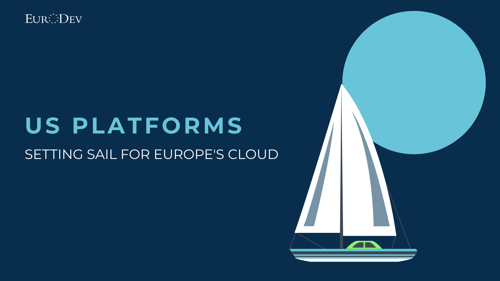Strategic Insights: Market Entry for North American Tech Manufacturers in Europe
Navigating the intricate landscape of entering the European market demands a nuanced and strategic approach, particularly for North American tech manufacturers seeking to establish a robust presence. In this discourse, we delve into the imperative considerations and strategies pivotal to a successful market entry into the European tech sphere.
In-Depth Market Understanding
Delving into the European tech landscape necessitates a meticulous examination of its multifaceted dimensions. It's imperative to conduct a granular analysis of each target country, understanding not only the macroeconomic factors but also the microcosms of local regulations, market trends, and consumer behaviors. An in-depth market understanding sets the foundation for a strategic and informed entry.
Tailored Product Positioning
Recognizing the heterogeneity of the European market, a tailored approach to product or service positioning is paramount. Addressing specific needs and cultural idiosyncrasies positions offerings as solutions, fostering resonance and solidifying value in the eyes of the discerning European consumer.
Beyond linguistic considerations, this involves a deep dive into local preferences, user behaviors, and societal trends. Adapting offerings to resonate with the specific needs of each market establishes a brand as not just a provider but a partner in progress.
Regulatory Mastery
Europe is a mosaic of regulatory frameworks. From GDPR compliance to adherence to product standards, meticulous attention to regulatory compliance is non-negotiable. Legal expertise is an invaluable asset in navigating these intricate waters, ensuring a seamless entry devoid of regulatory impediments:
- GDPR Compliance:
For tech manufacturers, especially those dealing with data-driven technologies, compliance with the General Data Protection Regulation (GDPR) is paramount. This involves understanding and implementing robust data protection measures, ensuring user consent mechanisms, and having transparent data processing practices. Regulatory mastery here involves not just meeting the minimum requirements but adopting a privacy-by-design approach, ingraining data protection into the very fabric of product development and operation. - Cybersecurity Regulations:
Europe places a high premium on cybersecurity, and tech manufacturers must navigate regulations that safeguard digital infrastructures and user data. Compliance with cybersecurity standards, incident response planning, and regular cybersecurity assessments are integral components. Regulatory mastery includes staying abreast of evolving cybersecurity threats and proactively adapting to emerging risks. - AI and Ethical Tech Considerations:
The rise of artificial intelligence (AI) brings forth a new set of regulatory challenges. Understanding and adhering to guidelines related to AI ethics, transparency, and accountability is crucial. Regulatory mastery in this context involves integrating ethical considerations into AI algorithms, ensuring fairness, and being prepared to comply with any emerging AI-specific regulations. - Telecommunications Standards:
Tech manufacturers involved in the telecommunications sector need to navigate a complex web of standards and regulations. This includes compliance with the European Electronic Communications Code (EECC) and ensuring interoperability with existing communication networks. Regulatory mastery involves understanding the evolving landscape of 5G deployment, spectrum allocation, and ensuring adherence to telecommunications infrastructure standards. - Medical Device Regulations:
Tech manufacturers entering the European healthcare market must navigate stringent regulations for medical devices. Compliance with the Medical Devices Regulation (MDR) is critical, involving rigorous testing, documentation, and adherence to quality management systems. Regulatory mastery in this context requires collaboration with healthcare regulatory bodies, understanding clinical evaluation requirements, and ensuring post-market surveillance. - E-Waste and Environmental Regulations:
As part of a broader commitment to sustainability, Europe enforces strict regulations concerning electronic waste (e-waste). Tech manufacturers must adhere to the Waste Electrical and Electronic Equipment (WEEE) directive, ensuring proper disposal and recycling of electronic products. Regulatory mastery involves implementing sustainable product design, minimizing environmental impact, and complying with extended producer responsibility (EPR) obligations. - Open Source Software Compliance:
Tech products often incorporate open-source software components, and compliance with open-source licenses is vital. Regulatory mastery involves conducting thorough open-source software audits, ensuring compliance with licensing terms, and implementing robust processes for tracking and managing open-source components. This includes compliance with the General Public License (GPL) and other open-source licenses. - Intellectual Property Protection:
Safeguarding intellectual property (IP) is central to the tech industry. Regulatory mastery involves understanding European patent laws, trademark regulations, and copyright protections. Tech manufacturers must navigate IP considerations not only for product development but also for entering markets without infringing on existing patents or trademarks. Engaging in due diligence, filing for necessary protections, and enforcing IP rights are integral components. - Data Localization and Sovereignty:
Certain European countries have specific regulations regarding the localization of data, emphasizing data sovereignty. Tech manufacturers must navigate these regulations, ensuring that data is stored and processed in compliance with local laws. Regulatory mastery involves understanding the intricacies of data residency requirements and implementing solutions that align with both local regulations and global operational needs. - Continuous Regulatory Monitoring and Advocacy:
The tech industry is dynamic, and regulatory landscapes are subject to frequent changes. Regulatory mastery involves not only compliance but also active engagement in monitoring regulatory developments. Participating in industry associations, advocating for reasonable regulatory frameworks, and contributing to the development of industry standards are strategies for maintaining regulatory agility.
Strategic Local Partnerships
Building symbiotic relationships with local partners is a strategic imperative. Whether through distributors, resellers, or joint ventures, strategic partnerships provide the necessary insight and leverage to navigate local nuances, accelerating market penetration.
This goes beyond basic distributor relationships. Exploring alliances or collaborations with local tech players can provide invaluable insights into the market dynamics, consumer behavior, and regulatory intricacies. Strategic partnerships become the conduits for smoother navigation of local nuances.
Cultural Acuity
Cultural sensitivity is a cornerstone of successful market entry. Tailor marketing and communication strategies to align seamlessly with local cultures, accounting for language nuances and cultural subtleties. Such an approach engenders connection and trust.
Cultural sensitivity extends beyond product adaptation to the very fabric of marketing and communication. Crafting campaigns that not only respect cultural nuances but actively engage with the local ethos is paramount. This involves understanding the historical context, and societal values, and leveraging this insight for impactful storytelling that resonates with the audience.
Digital Proficiency
In an era dominated by digital connectivity, a robust online strategy is non-negotiable. However, it's not merely about establishing a digital presence; it's about leveraging data analytics for precise market research, targeted advertising, and even adapting strategies in real time based on online consumer behavior. Social media platforms become powerful tools for engagement and brand building.
Customer-Centric Paradigm
A customer-centric ethos should underscore market entry strategies. A meticulous understanding of customer needs, preferences, and pain points facilitates not only brand loyalty but also informs product refinement based on real-time feedback.
Supply Chain Agility
Optimize supply chain dynamics for efficiency and flexibility. An agile supply chain is indispensable for meeting the diverse demands of European markets and adapting to the dynamic fluctuations of demand and supply.
Continuous Learning Ethos
The business landscape is in perpetual flux. Commit to continuous learning—stay abreast of market trends, consumer behaviors, and emerging technologies. An adaptive strategy positions your brand as a dynamic and responsive player in the evolving tech ecosystem.
Metric-Driven Adaptation
Metrics are the compass guiding the journey. Defining key performance indicators (KPIs) is not just about assessing success but also about iterative improvement. Regularly analyzing metrics allows for data-driven decision-making, ensuring that strategies can be recalibrated based on actual performance rather than assumptions.
In conclusion, the path to successful market entry into the European tech landscape is nuanced and multifaceted. It demands a commitment to understanding the intricacies of each market, an agility to adapt to diverse cultural landscapes, and a resilience to navigate the complexities of regulations and consumer expectations.
Armed with a detailed understanding and a commitment to continuous improvement, tech manufacturers can not only enter but thrive in the European market, contributing to the dynamic tapestry of the global tech ecosystem.
Category
Related articles
-

Guide: Navigating Tariffs and Trade Agreements in Europe
30 January 2024By understanding the market dynamics and optimizing tariff strategies manufacturers can position...
Read more -

Interview: Becoming a NATO supplier with Vicente Gonzalez
29 November 2023Vicente Gonzalez provides invaluable insights into the challenges and prospects for North American...
Read more -

A 2024 Outlook for US Cloud Platforms in Europe
31 August 2023As a US platform setting sail for Europe's cloud, EuroDev is there to guide you as your compass....
Read more

